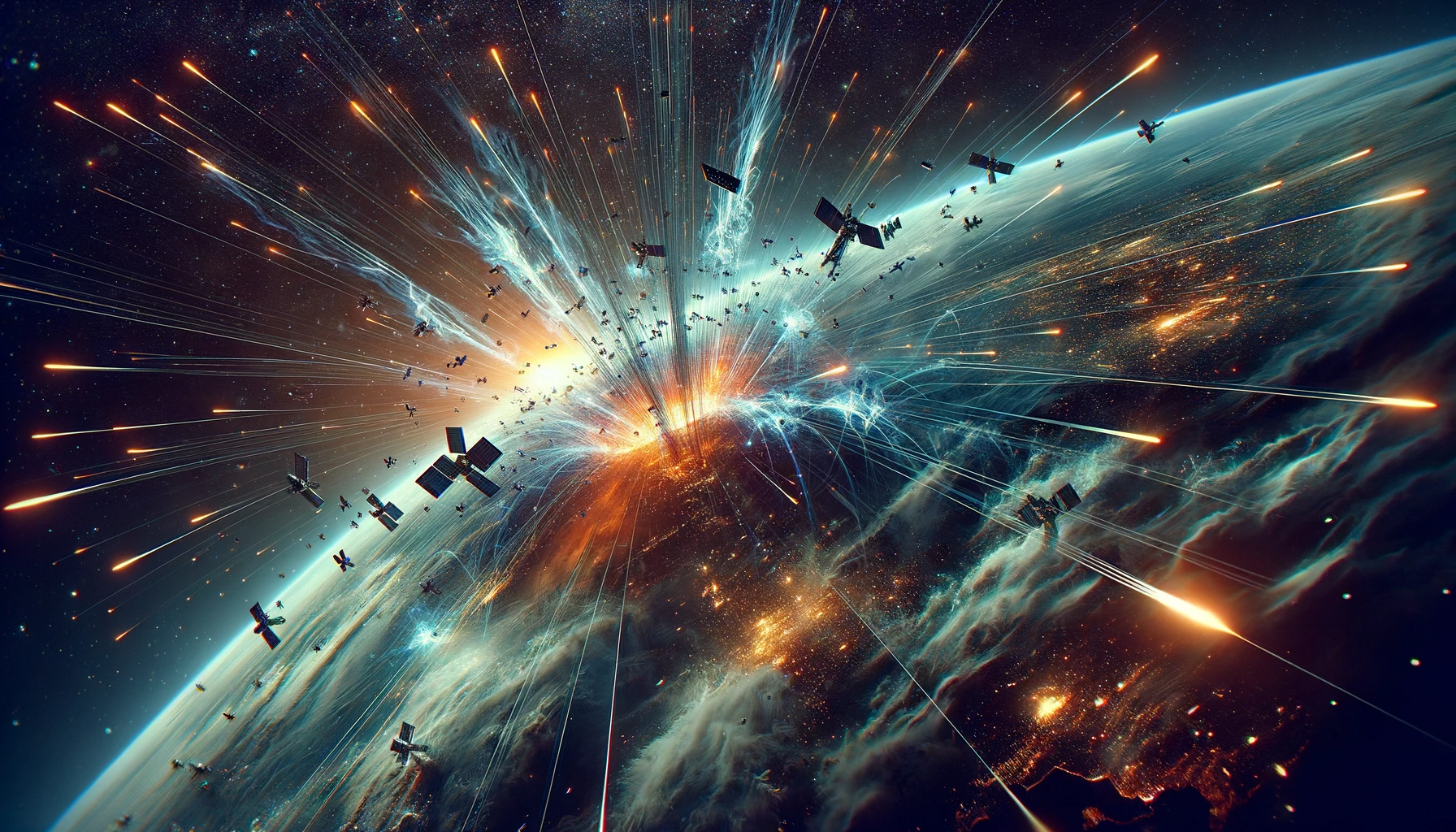The document titled “Potential Perturbation of the Ionosphere by Megaconstellations and Corresponding Artificial Re-entry Plasma Dust” by S. Solter-Hunt, dated December 18, 2023, explores the impact of rapidly increasing satellite megaconstellations on the ionosphere and magnetosphere. Here’s a summary of the key points
- Megaconstellations and Satellite Re-entry: The paper starts by discussing the expected increase in satellites, estimated to be between 500,000 to 1 million in the coming decades. These satellites, primarily for internet constellations, are disposable, constantly re-entering, and being replaced. This creates a layer of conductive particulate in the ionosphere, significantly impacting the magnetosphere.
- Impact on the Van Allen Belts: The author highlights that the mass of conductive particles from satellite re-entry is already billions of times greater than the mass of the Van Allen Belts. This could create a global band of plasma dust with a charge higher than the rest of the magnetosphere, leading to significant perturbations.
- Conductive Particulate and Magnetosphere: The density of conductive material from satellites in the lower ionosphere is increasing rapidly. This is forming a layer of artificial plasma dust in the meteor ablation zone, which may change or perturb the magnetosphere.
- Debye Length Considerations: The paper discusses the increase in Debye length in spaceflight regions compared to non-spaceflight regions. Debye length is a measure of a plasma’s electric properties, and its increase indicates a significant impact on the ionosphere due to human activity.
- Satellite Re-entry Material: The document quantifies the mass of material added to the magnetosphere by the space industry. For instance, it mentions that the Starlink V2 satellite constellation alone would add a significant amount of conductive material to the upper atmosphere daily, potentially affecting the ionosphere’s structure.
- Plasma Drag and Other Effects: The increase in mass of artificial plasma dust could lead to plasma drag, affecting the magnetosphere. The document stresses the need for more accurate modeling and research to understand these impacts better.
- Comparisons and Warnings: The paper draws comparisons with other planetary bodies and historical events, like the Chicxulub impact, to illustrate the potential scale of the impact. It warns of the risks involved with the constant addition of conductive materials to the ionosphere and magnetosphere.
- Call for Research and Action: The author calls for multidisciplinary research and more accurate modeling of the atmosphere, ionosphere, and magnetosphere to understand and mitigate the impacts of these megaconstellations and their debris.
This report highlights significant concerns about the potential impact of satellite megaconstellations on Earth’s ionosphere and magnetosphere, emphasizing the need for urgent and extensive research in this field.
The Ionosphere in Peril: How Satellite Megaconstellations Could Alter Earth’s Atmosphere
In an age where technological advancements have leaped bounds, we face an unintended consequence that hovers, quite literally, above us. The rapid expansion of satellite megaconstellations, a necessary backbone for our insatiable appetite for connectivity, poses a threat not just in space but to the very fabric of our planet’s atmosphere.
A recent study by S. Solter-Hunt brings to light a disturbing aspect of this technological expansion. As these satellites, numbering potentially in the hundreds of thousands, reach the end of their life, they re-enter Earth’s atmosphere. This re-entry is not a silent return; it leaves behind a trail of conductive plasma dust in the ionosphere. This layer of artificial plasma, accumulating in the meteor ablation zone, could significantly perturb the magnetosphere, an invisible yet crucial layer that protects the Earth from solar winds and cosmic radiation.
The implications are profound. The mass of conductive particles introduced into the ionosphere is billions of times greater than that of the Van Allen Belts, a natural layer of charged particles held in place by Earth’s magnetic field. This man-made influx could create a global band of plasma dust, altering the charge dynamics of our atmosphere. The increased Debye length, a measure of a plasma’s electric properties, in spaceflight regions compared to non-spaceflight regions, is a clear indicator of human interference in a naturally balanced system.
The comparison with other planetary bodies and historical events, like the Chicxulub impact, is a stark reminder of the scale of potential impact. We are not just adding satellites to space; we are altering a fundamental natural shield of our planet. The paper stresses the urgent need for more accurate modeling and extensive research to understand the full spectrum of these impacts and how they might be mitigated.
As we marvel at the wonders of technology and the connectivity it brings, we must also pause and reflect on the cost. The illustration accompanying this blog captures this duality – a network of satellites enveloping the Earth, a testament to human ingenuity but also a potential harbinger of atmospheric upheaval. It’s a visual representation of our current crossroads: the awe of technological advancement and the looming concern for our planet’s delicate atmospheric balance.
We are at a pivotal moment where the call for multidisciplinary research and action is not just advisable; it is imperative. The future of our planet’s atmosphere, and in turn, our well-being, might depend on the decisions we make today in managing the skies above us.








